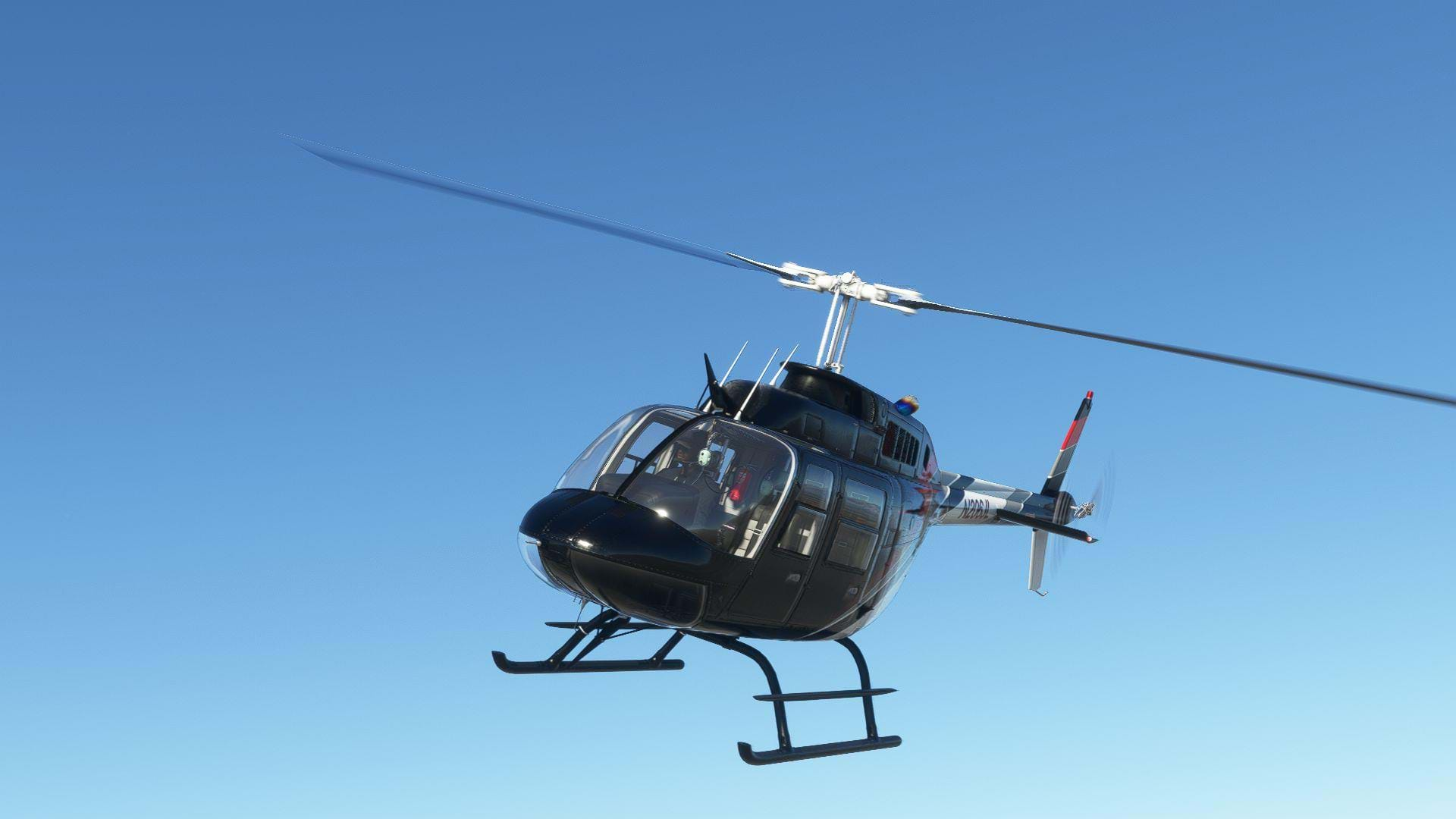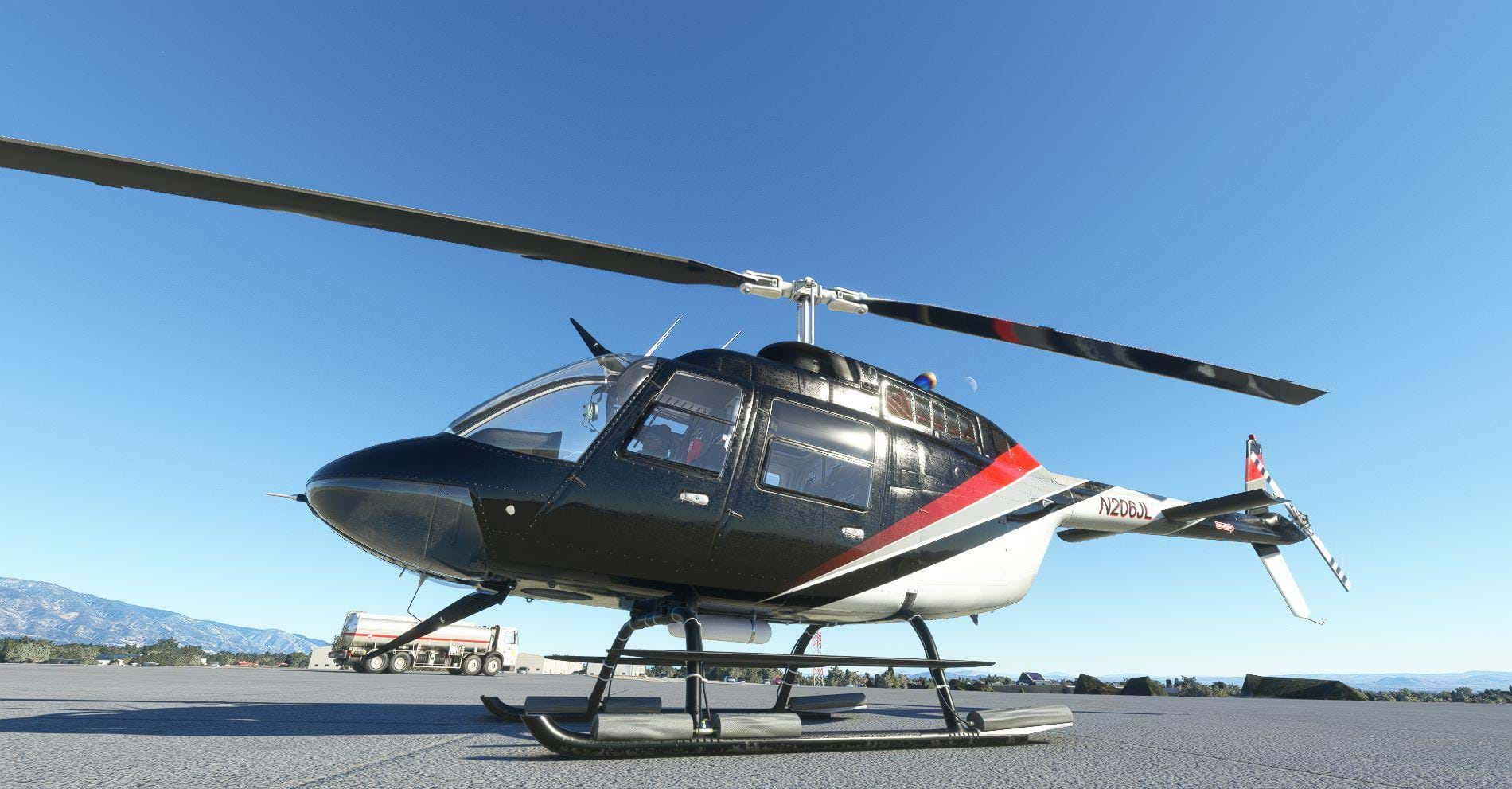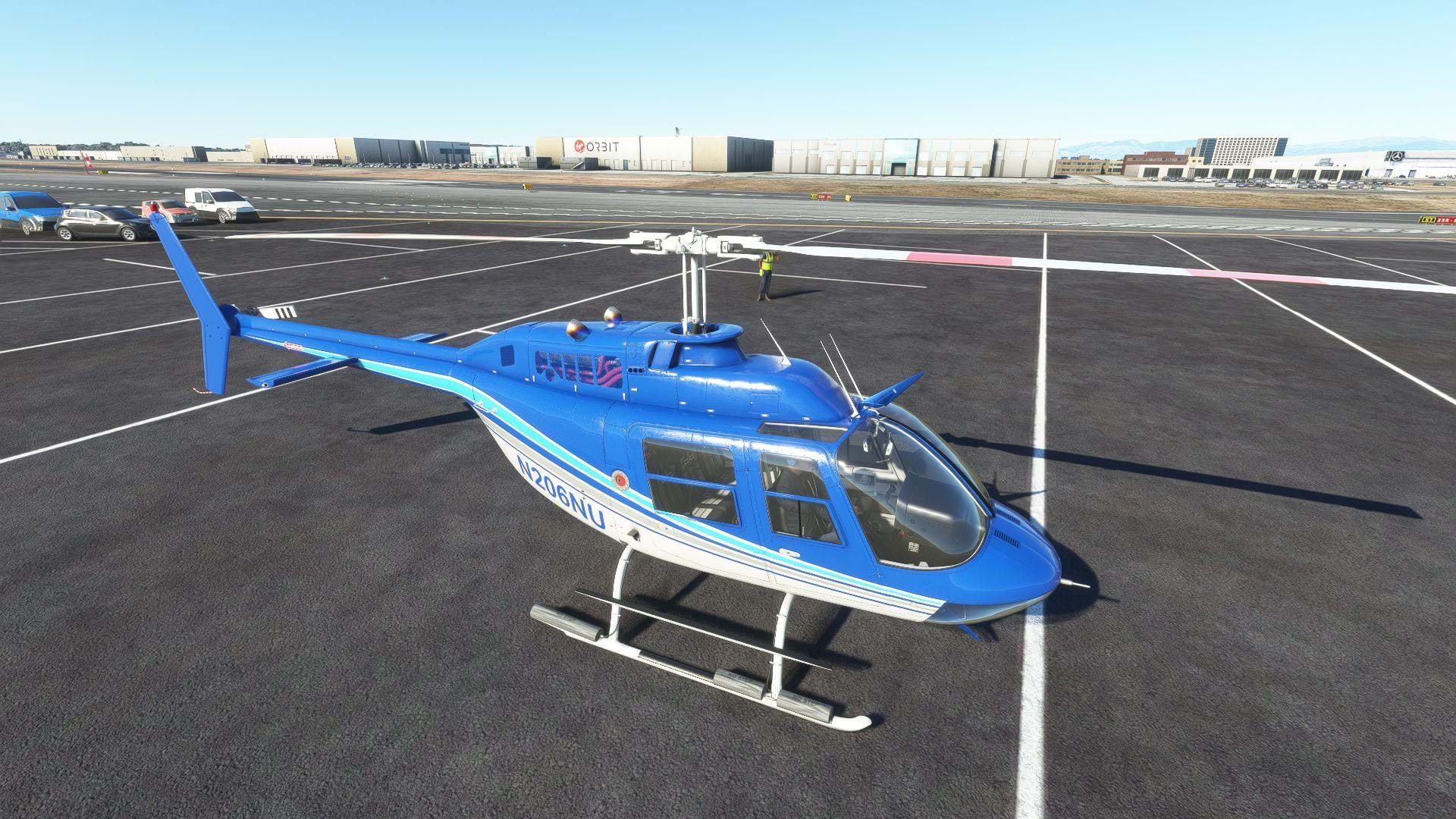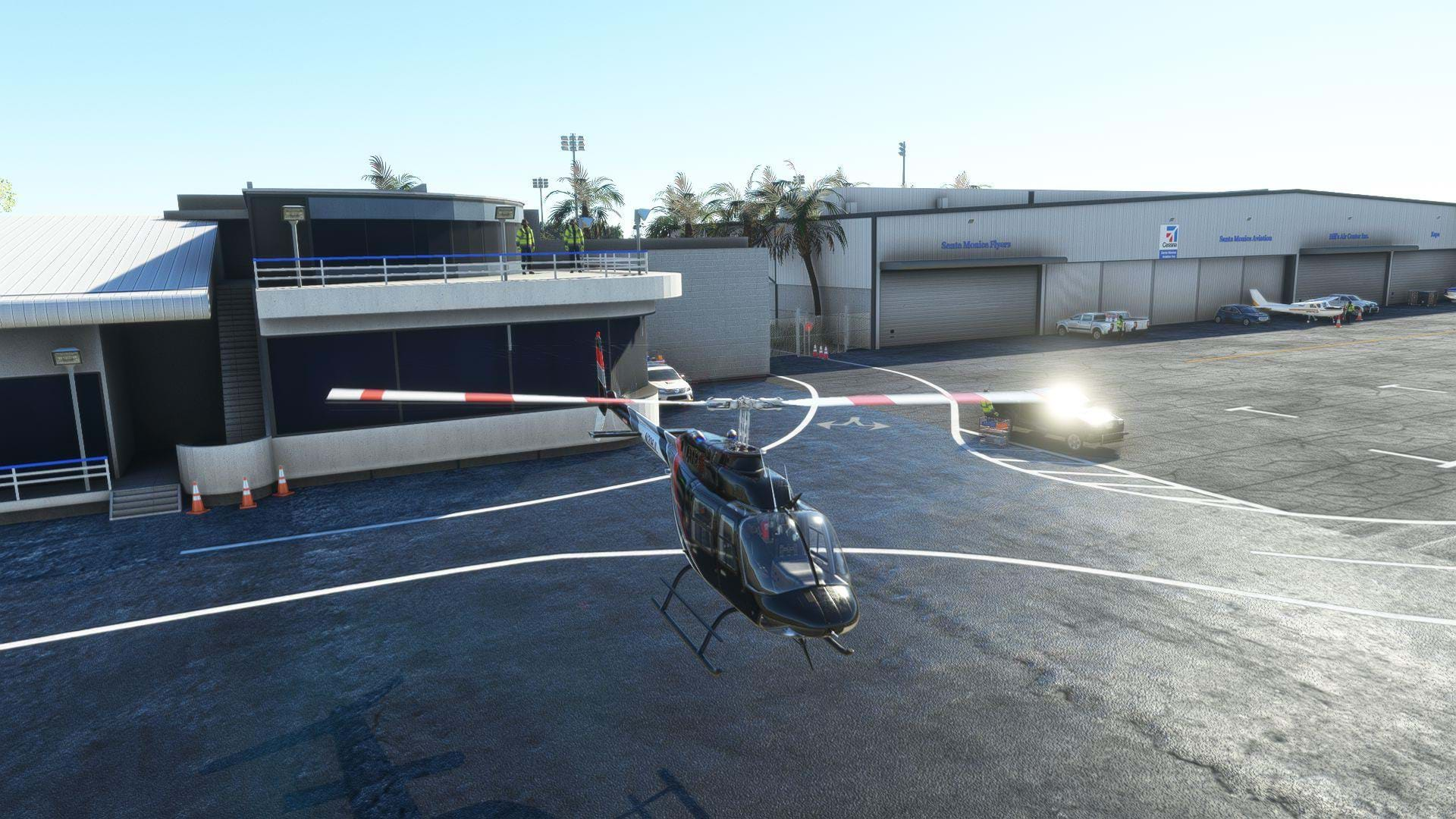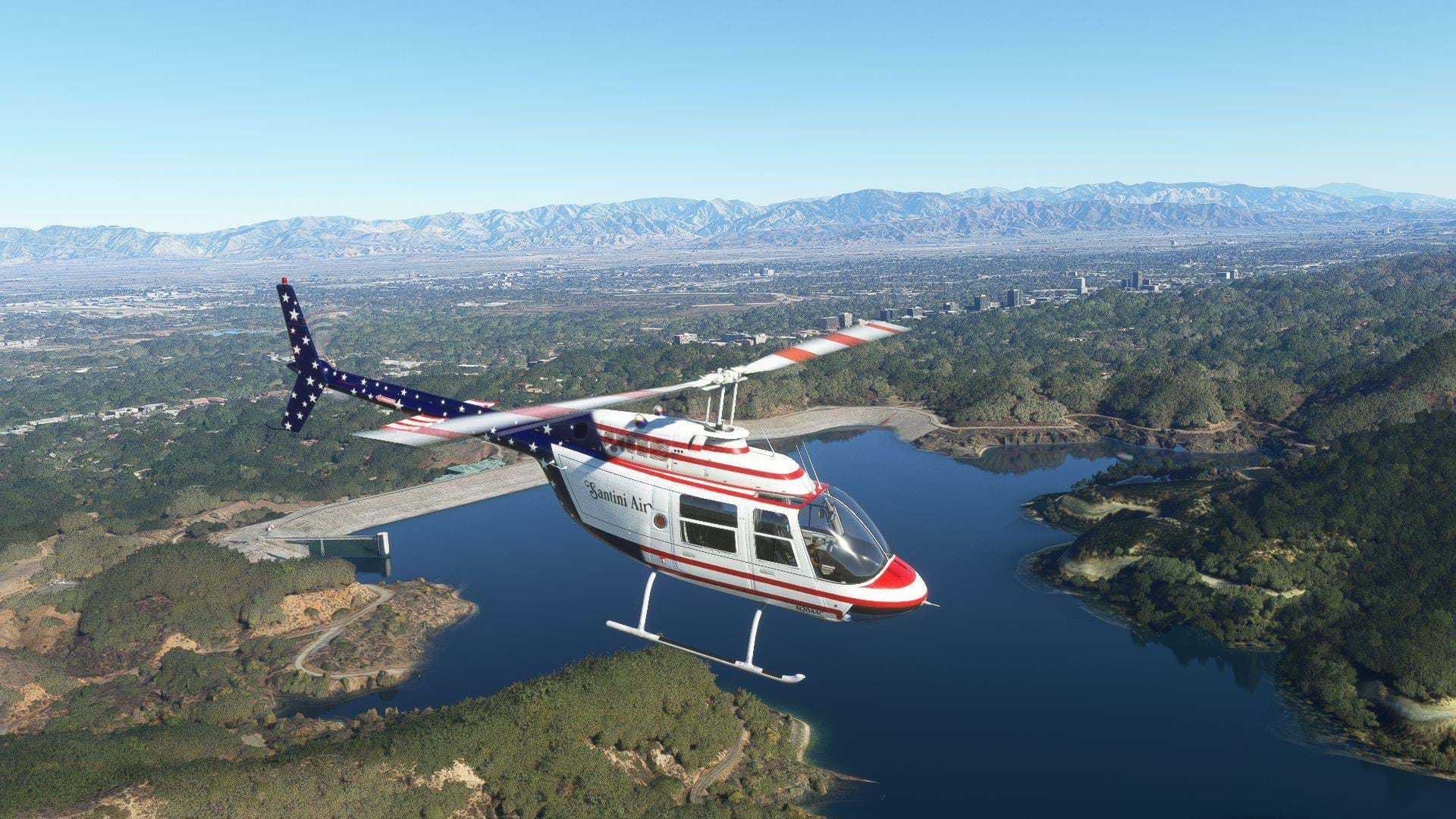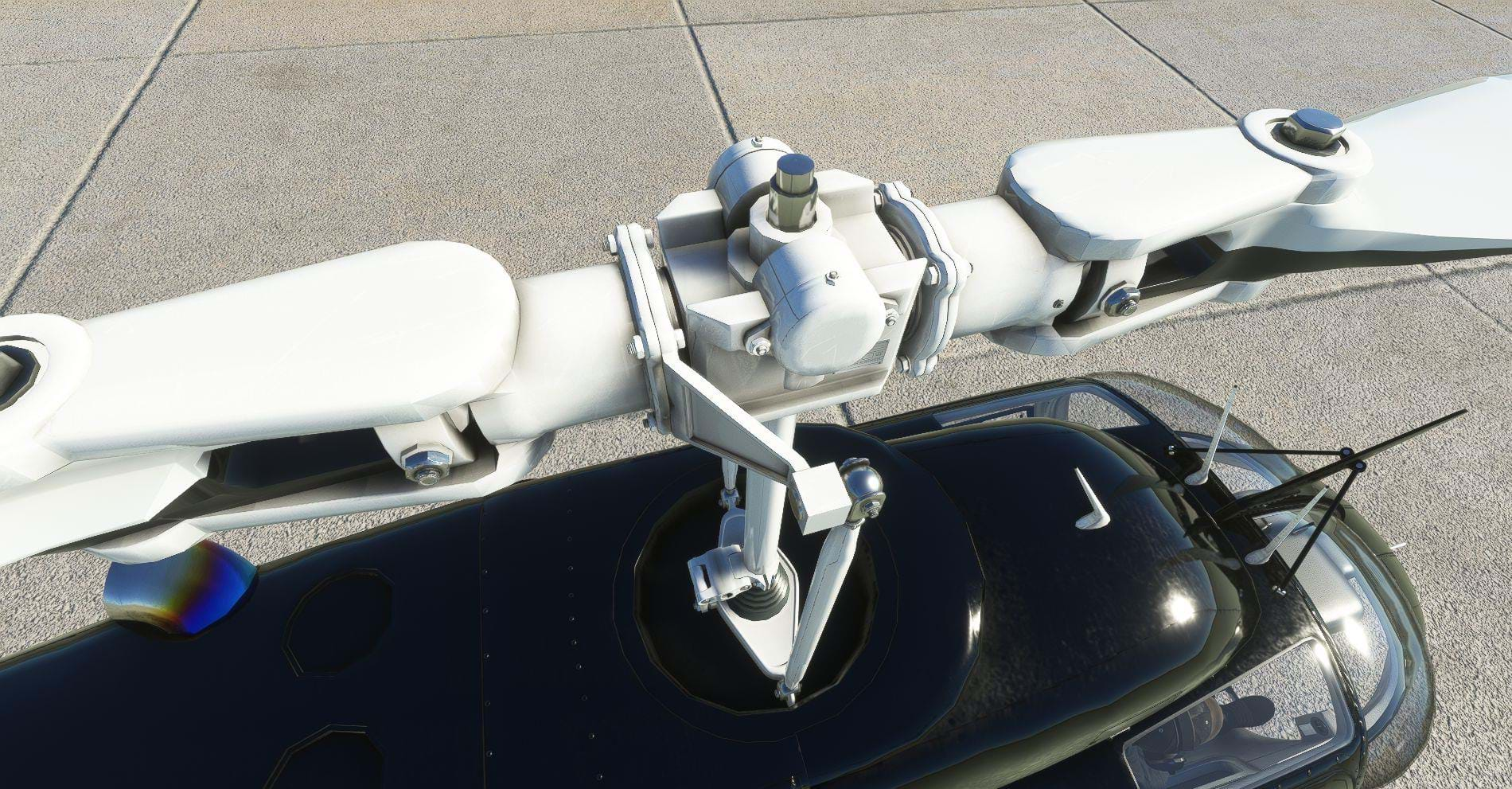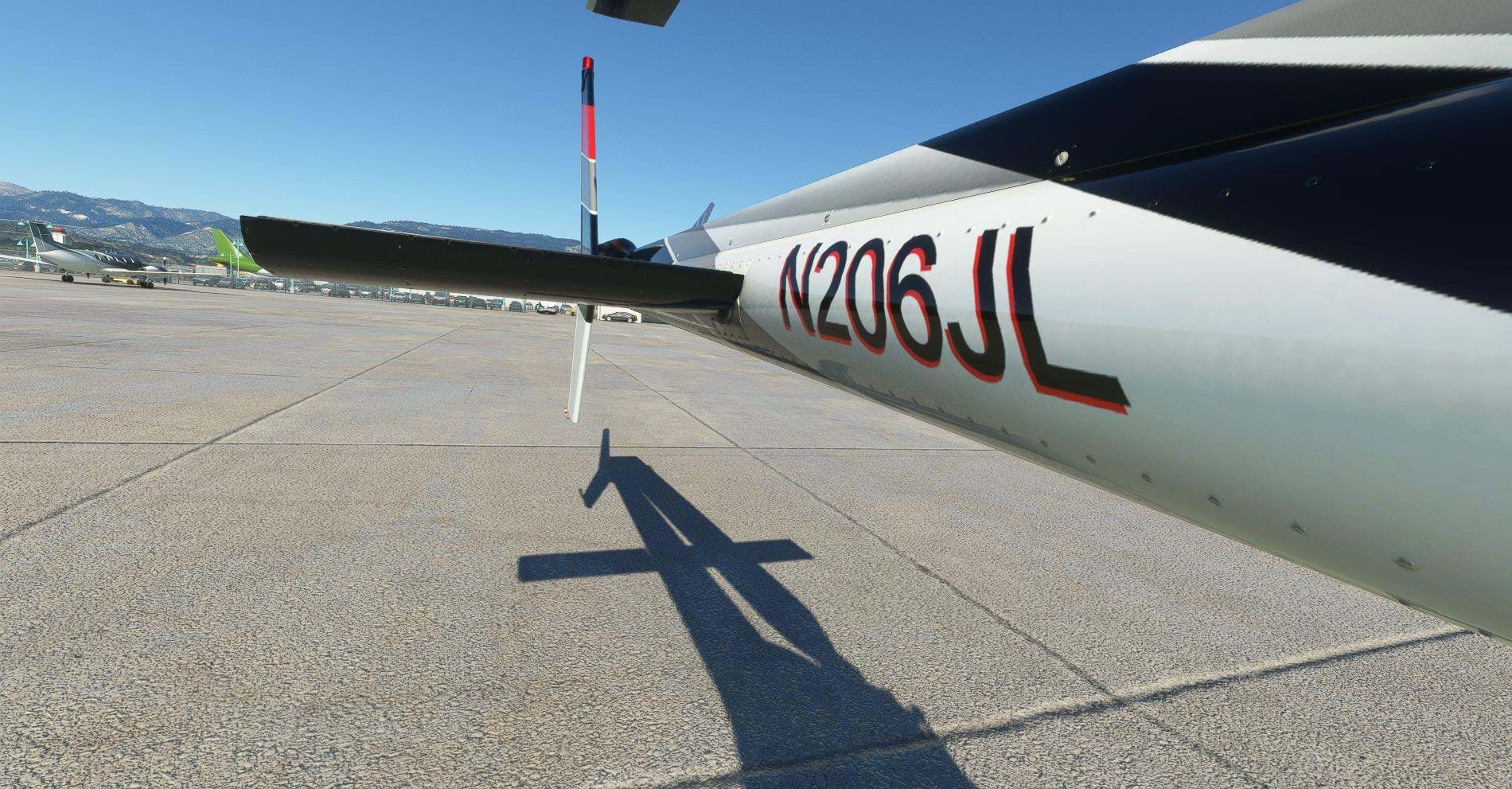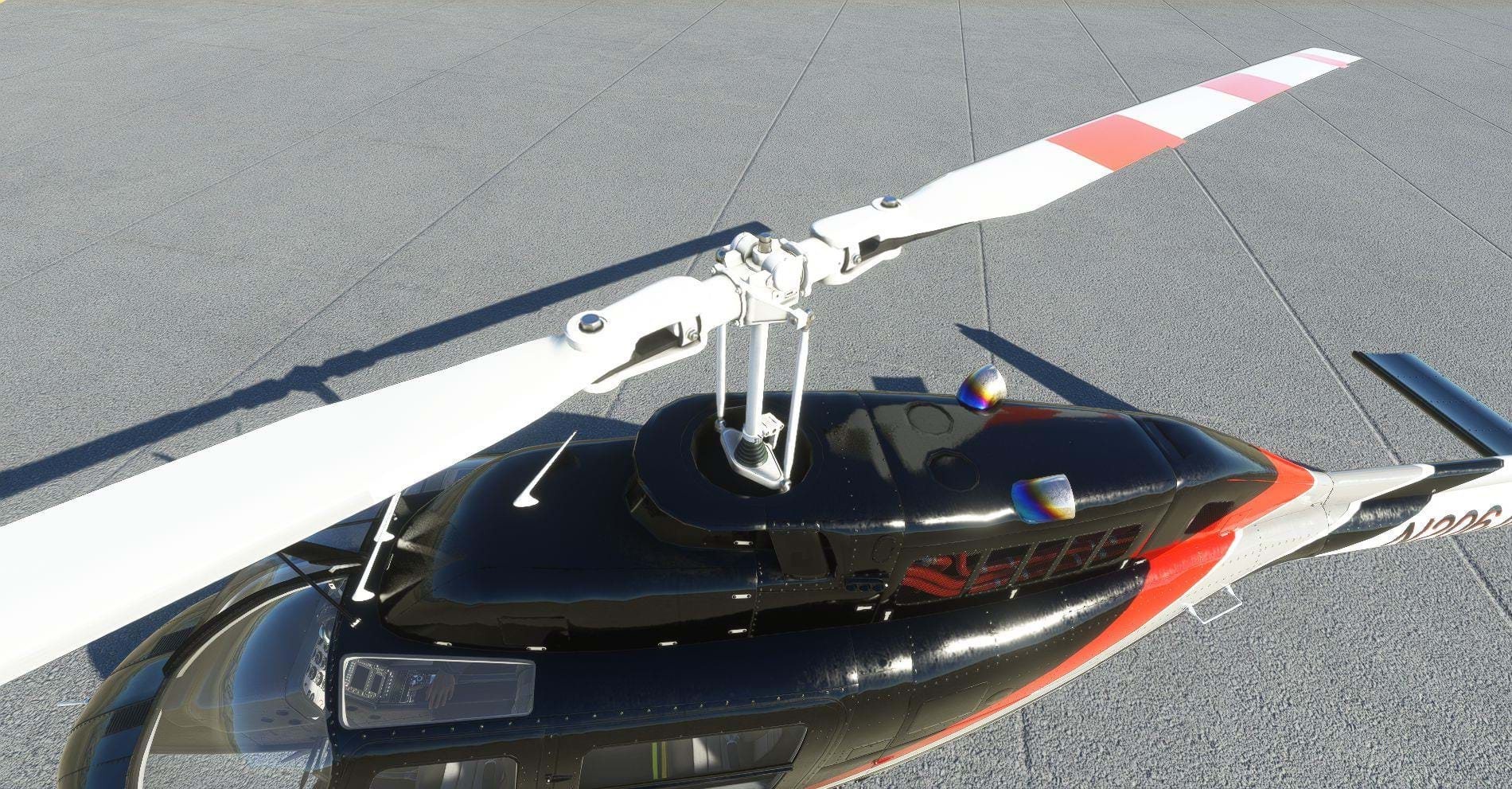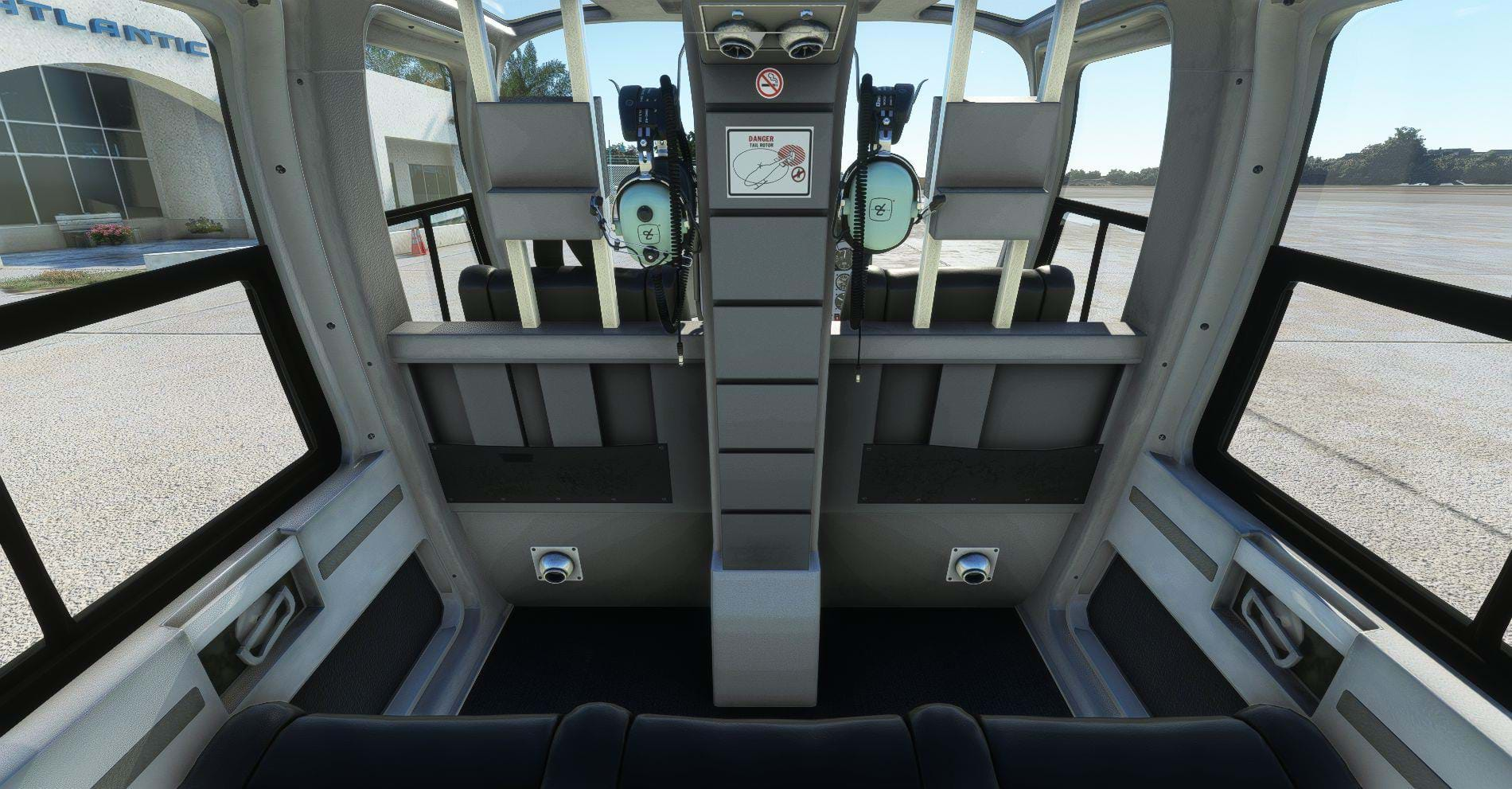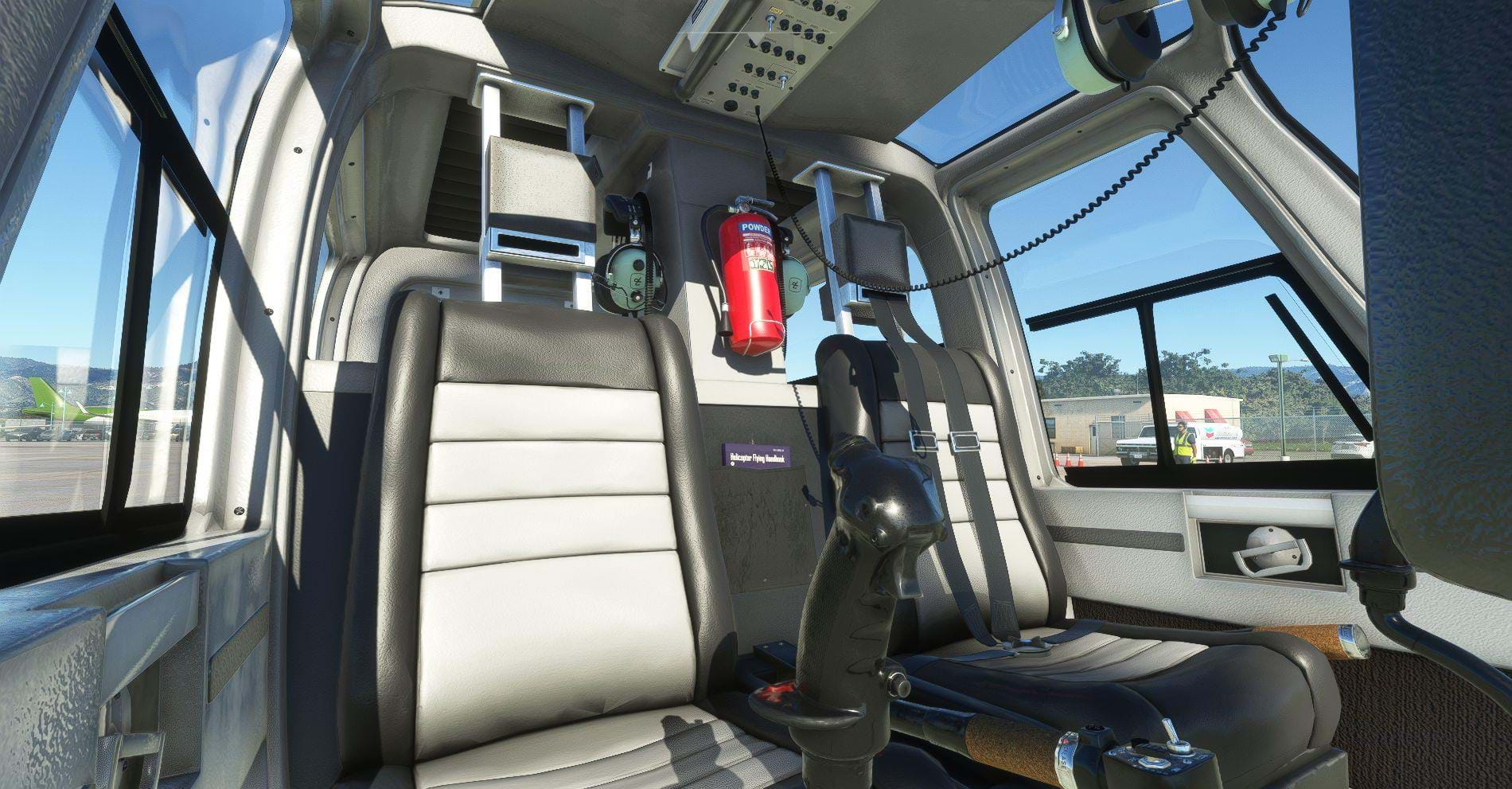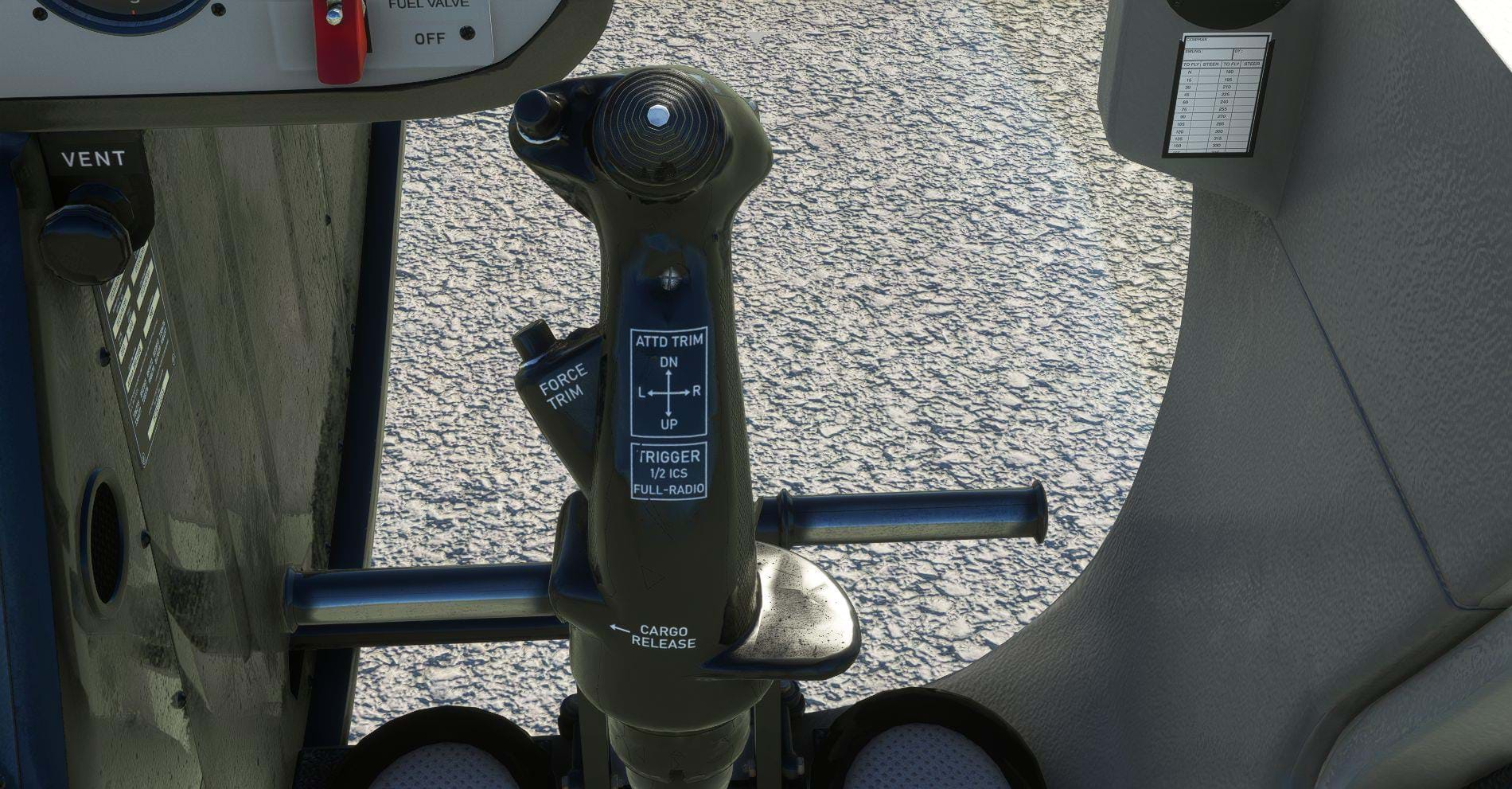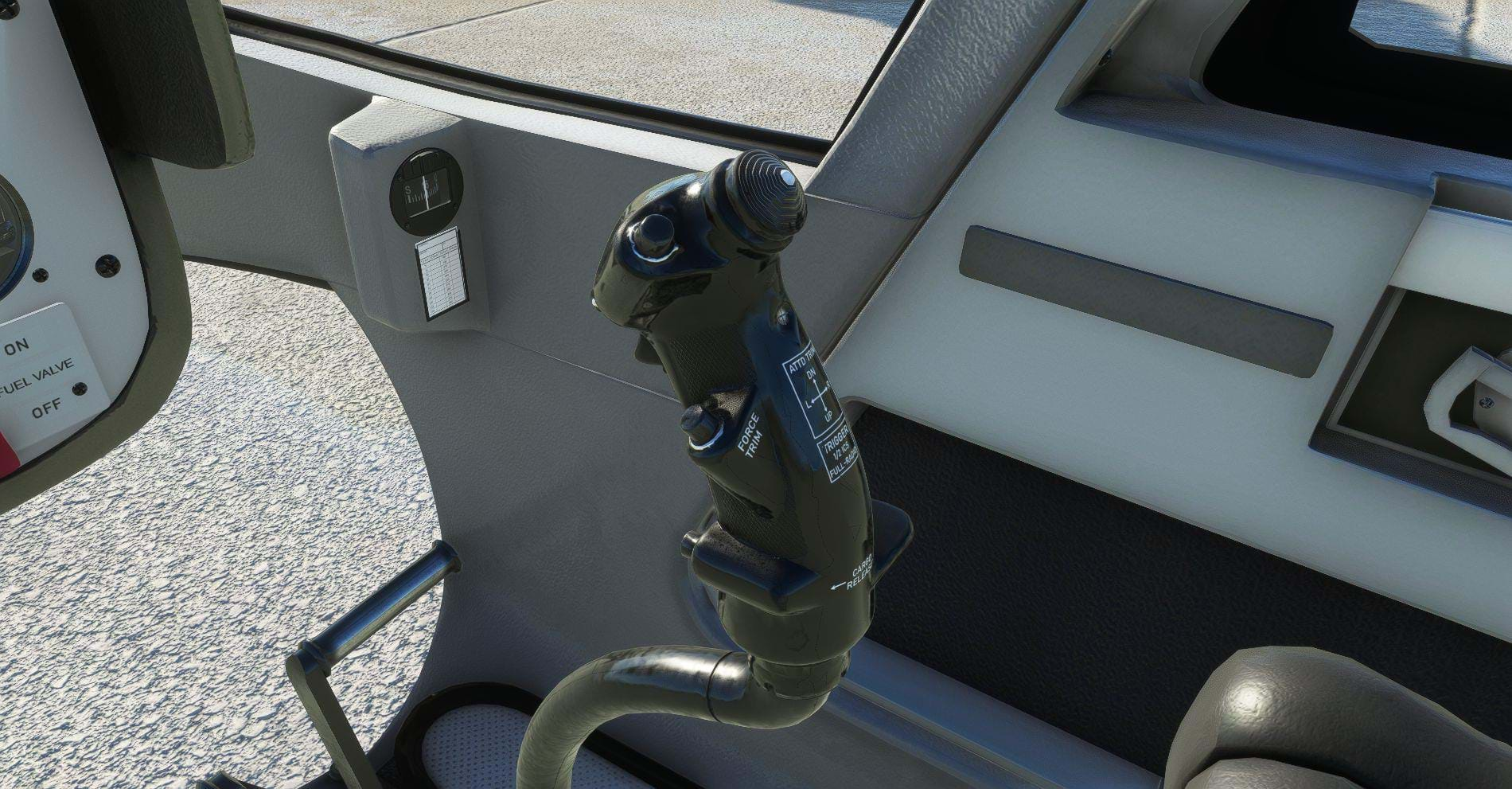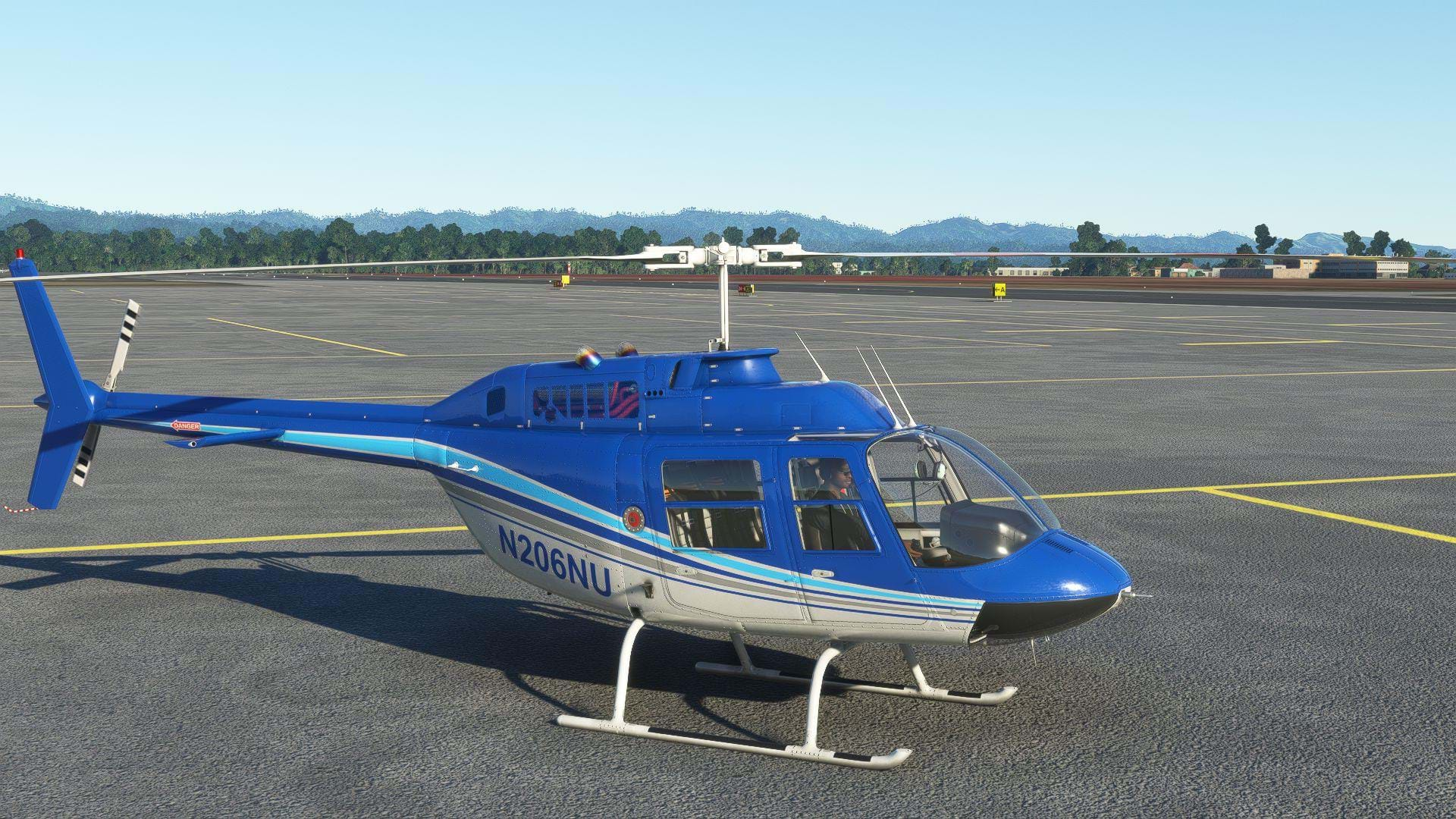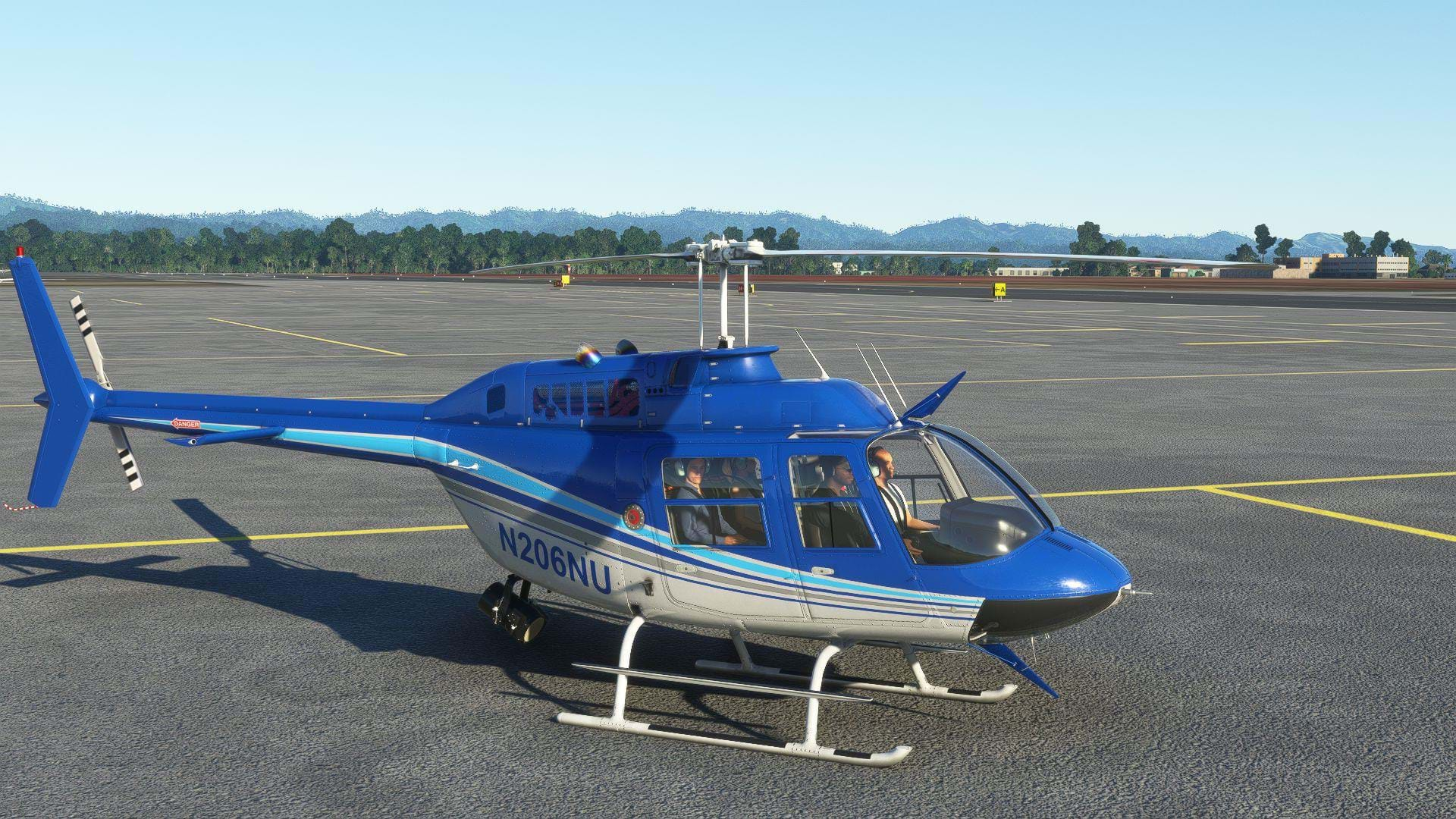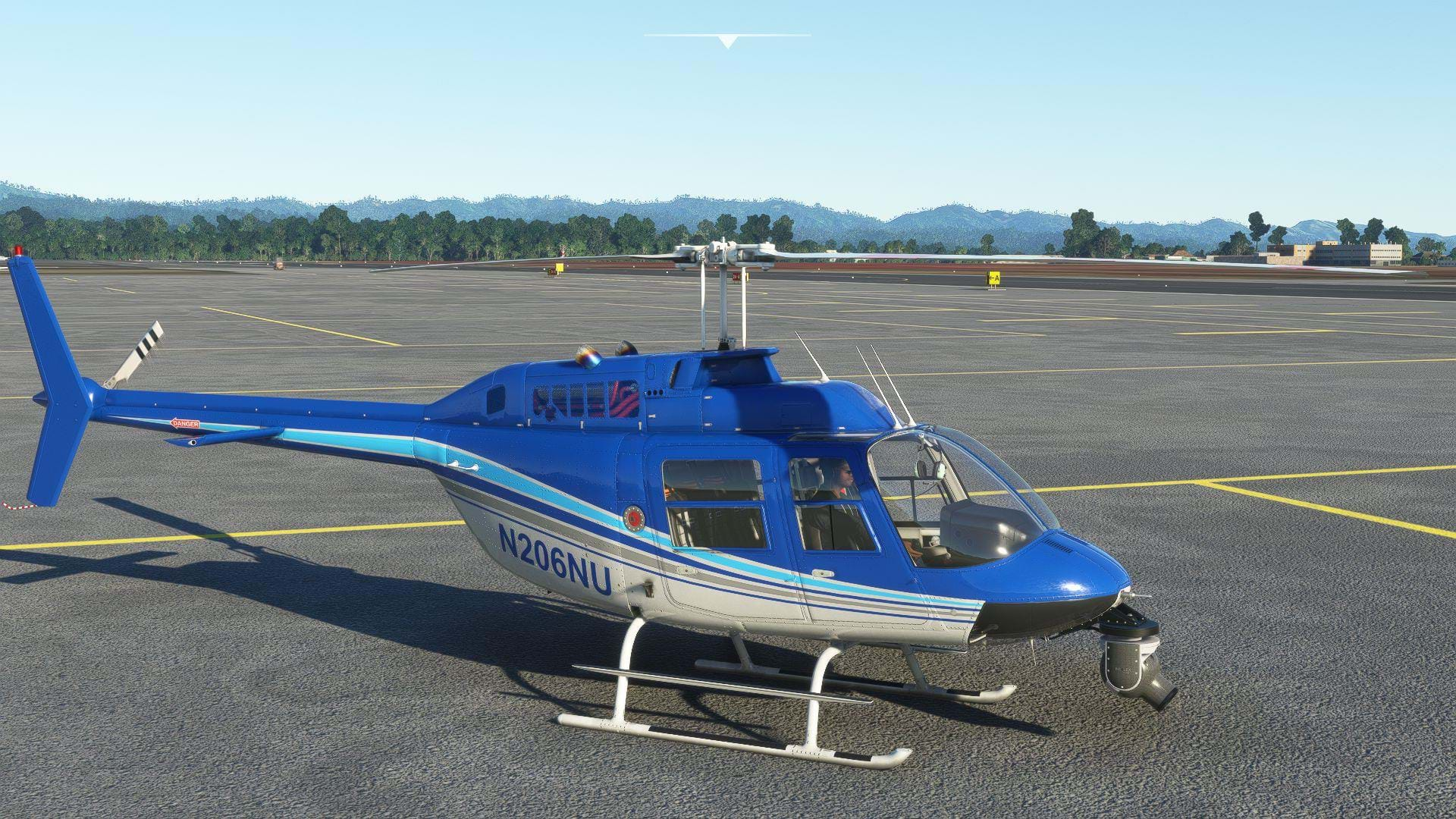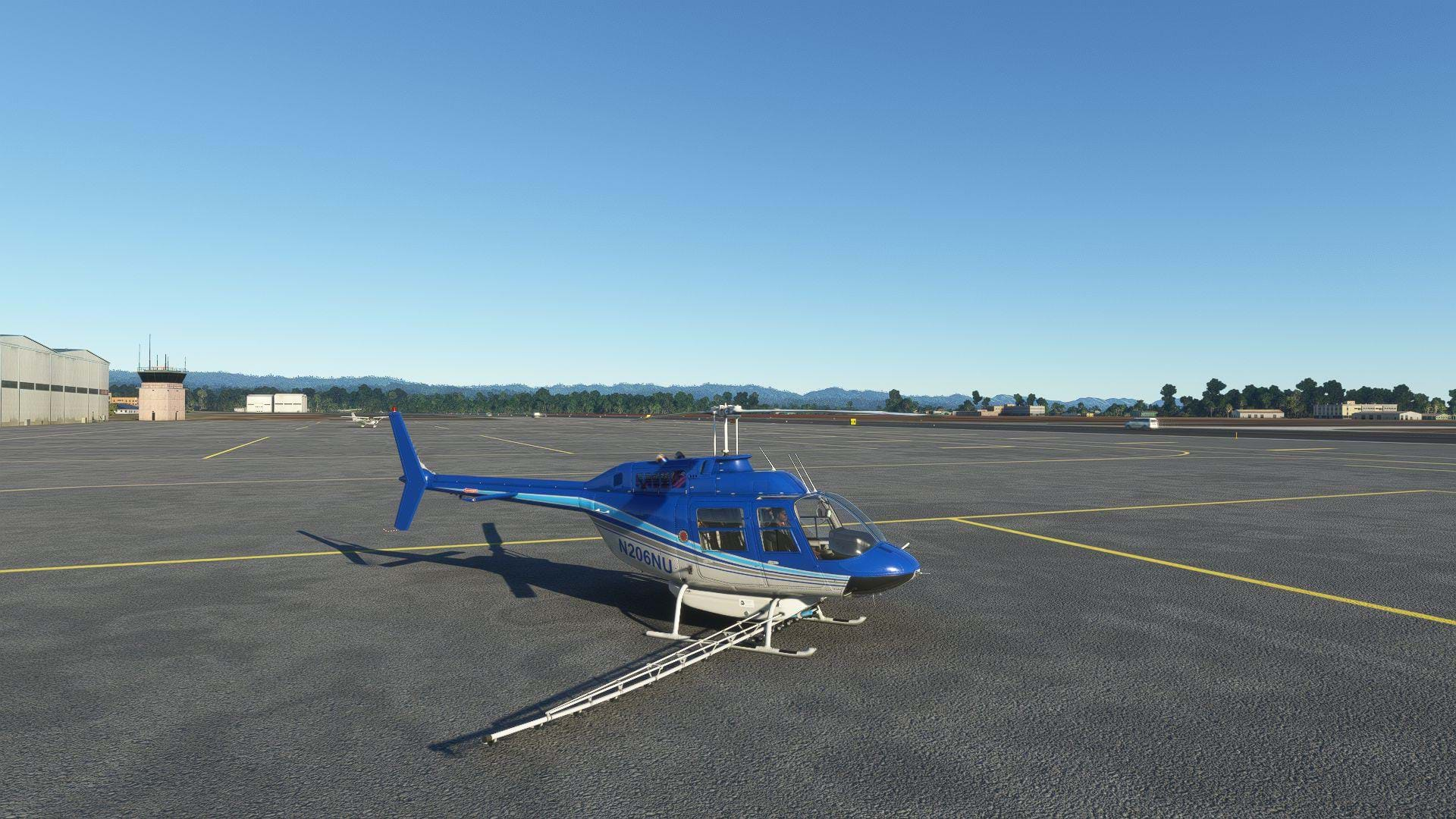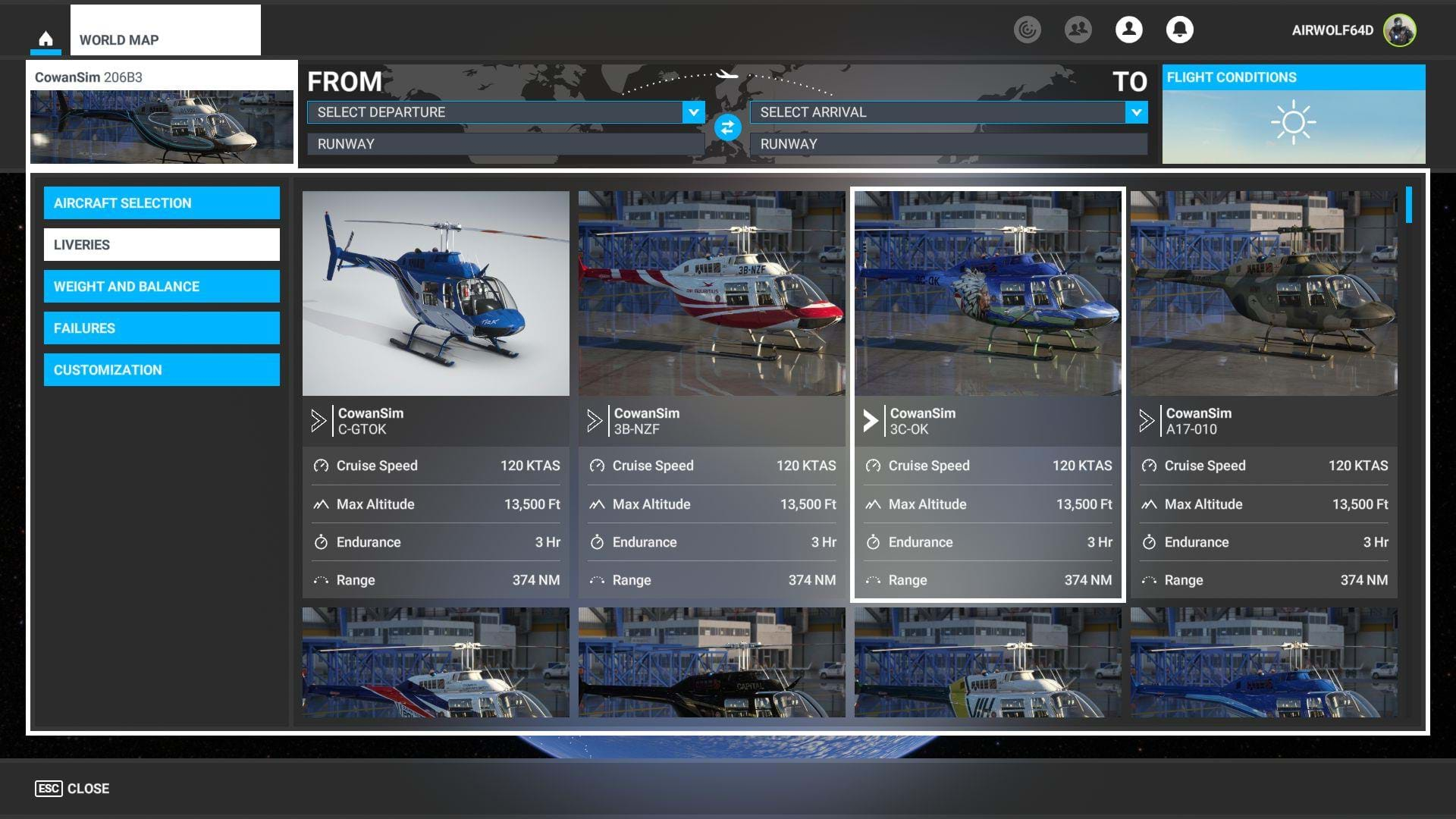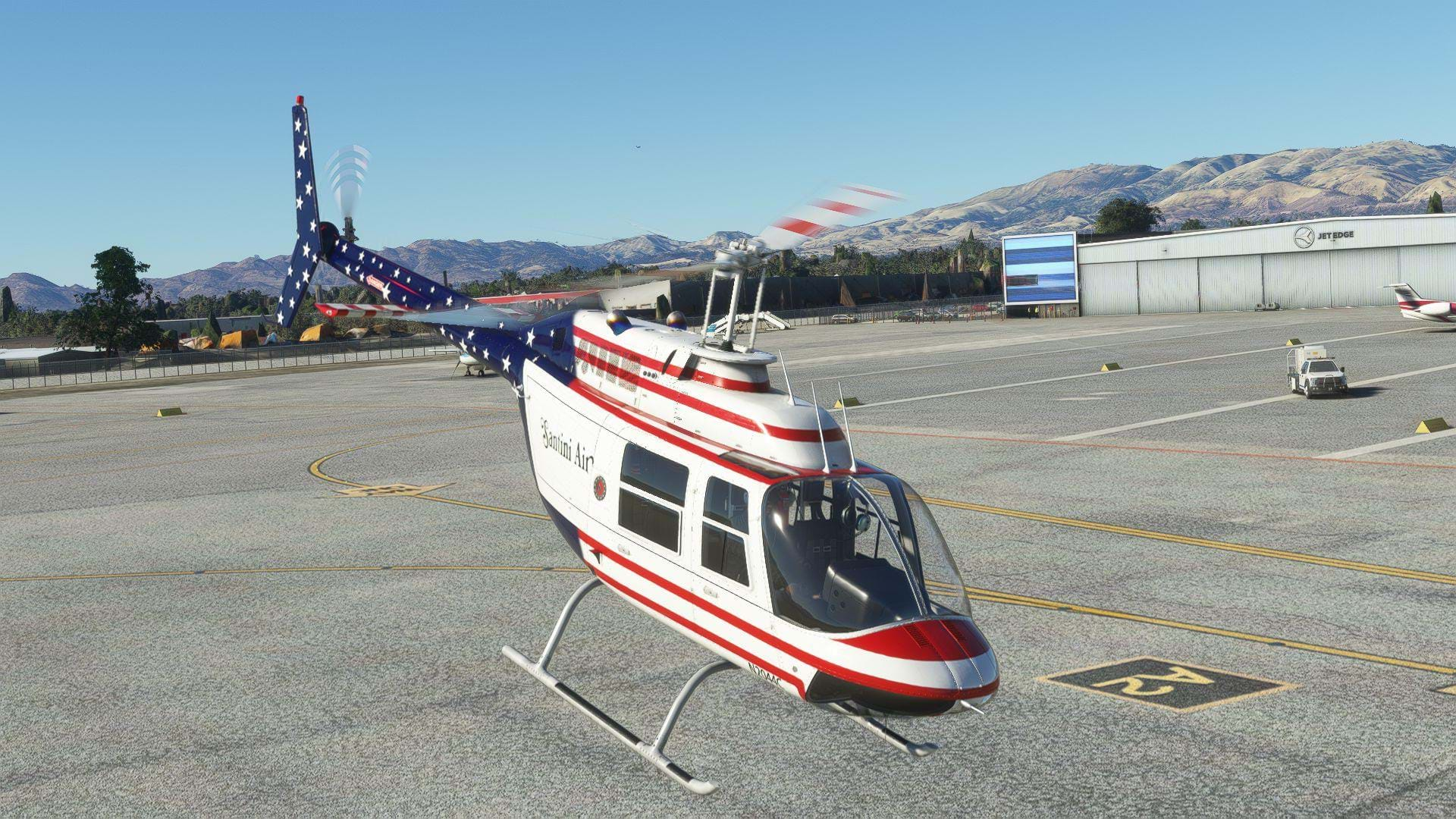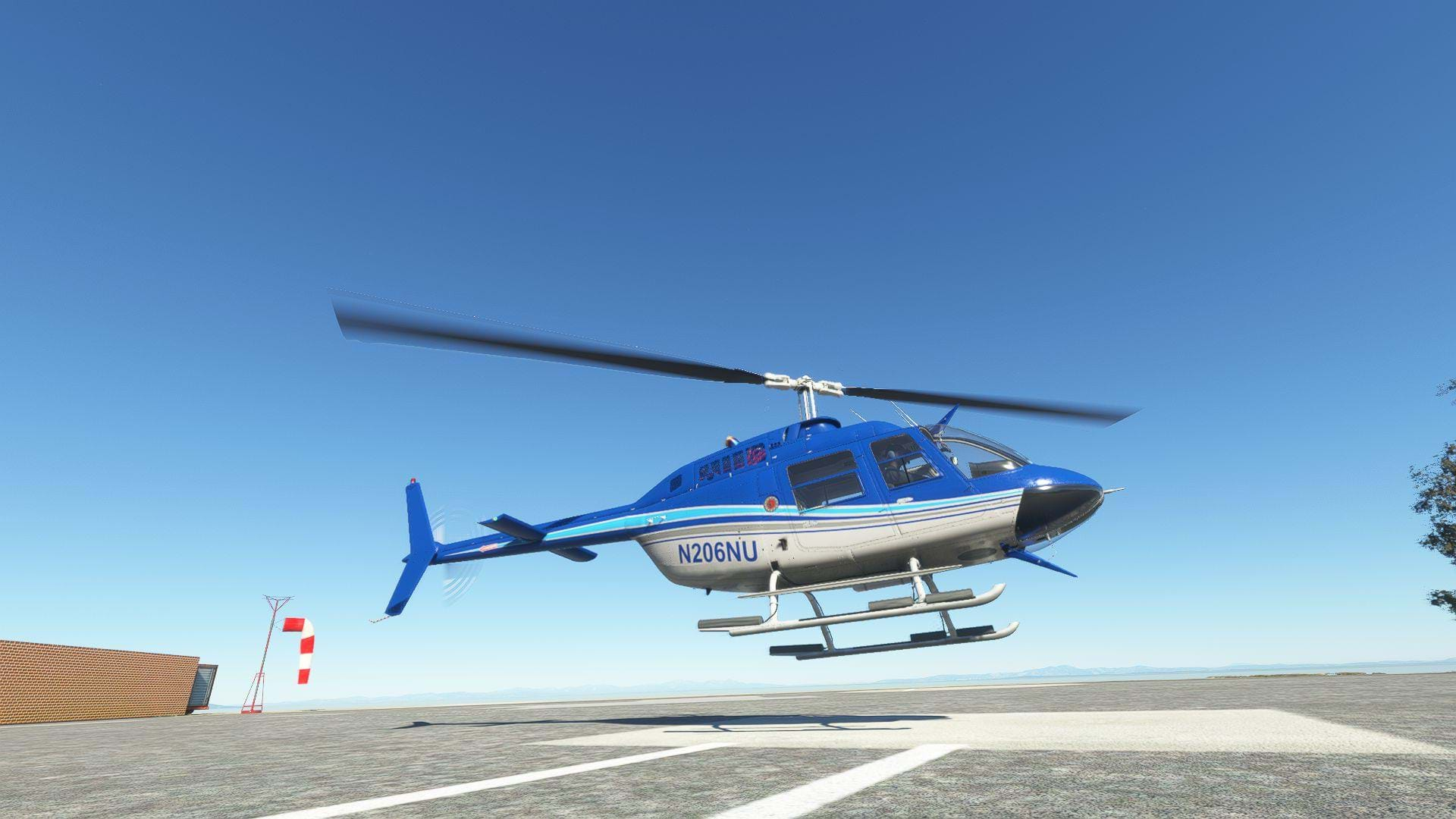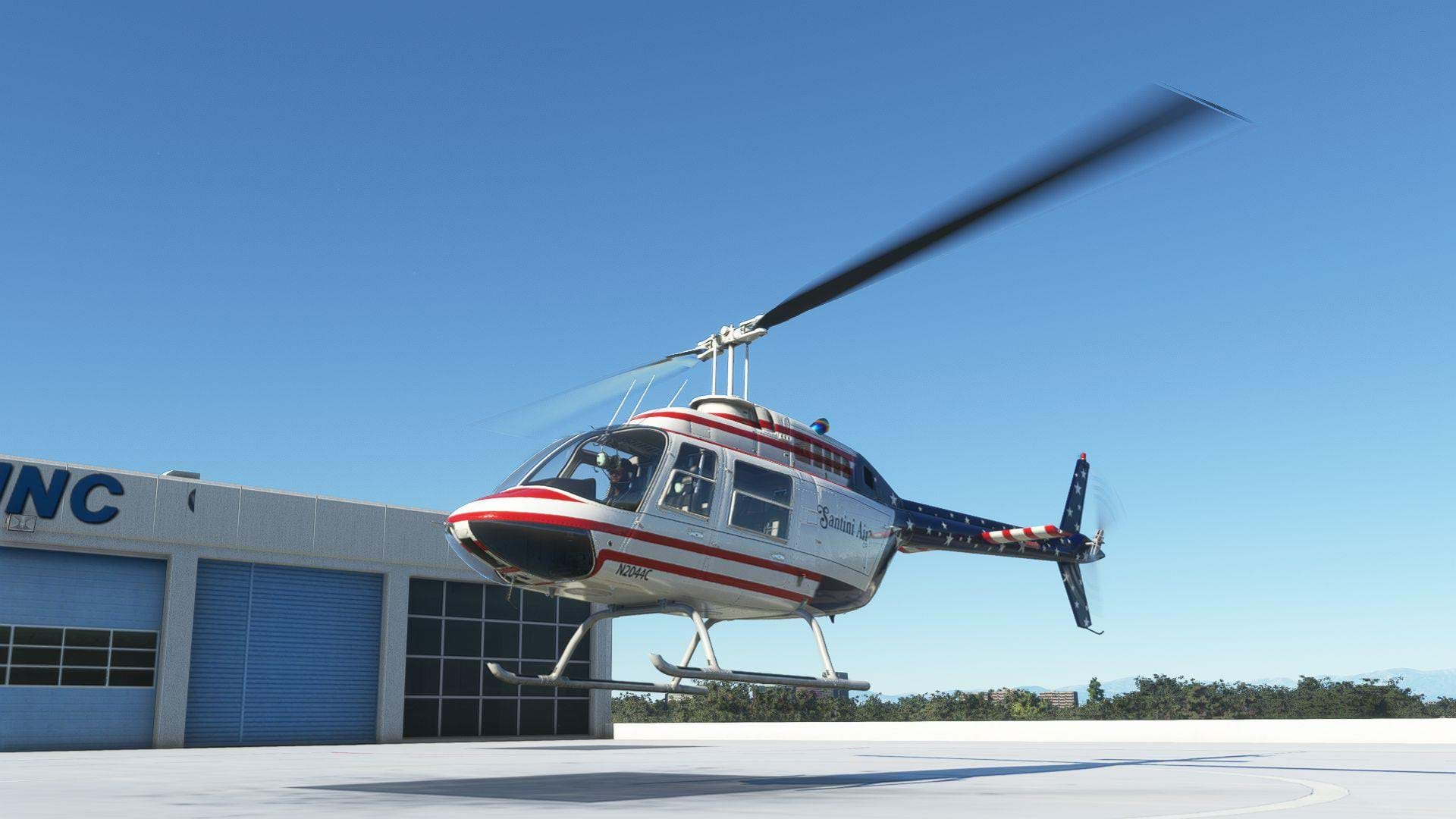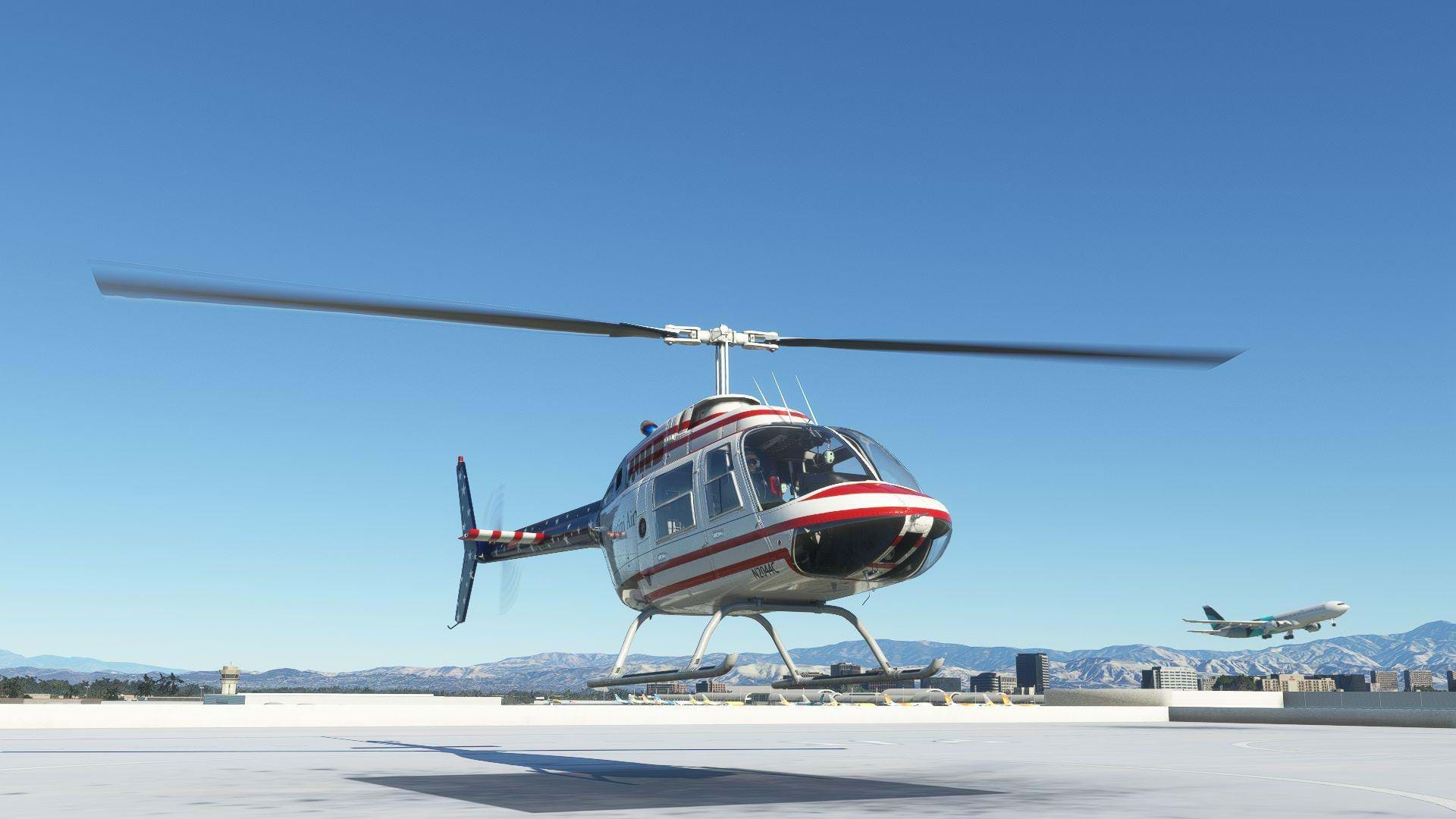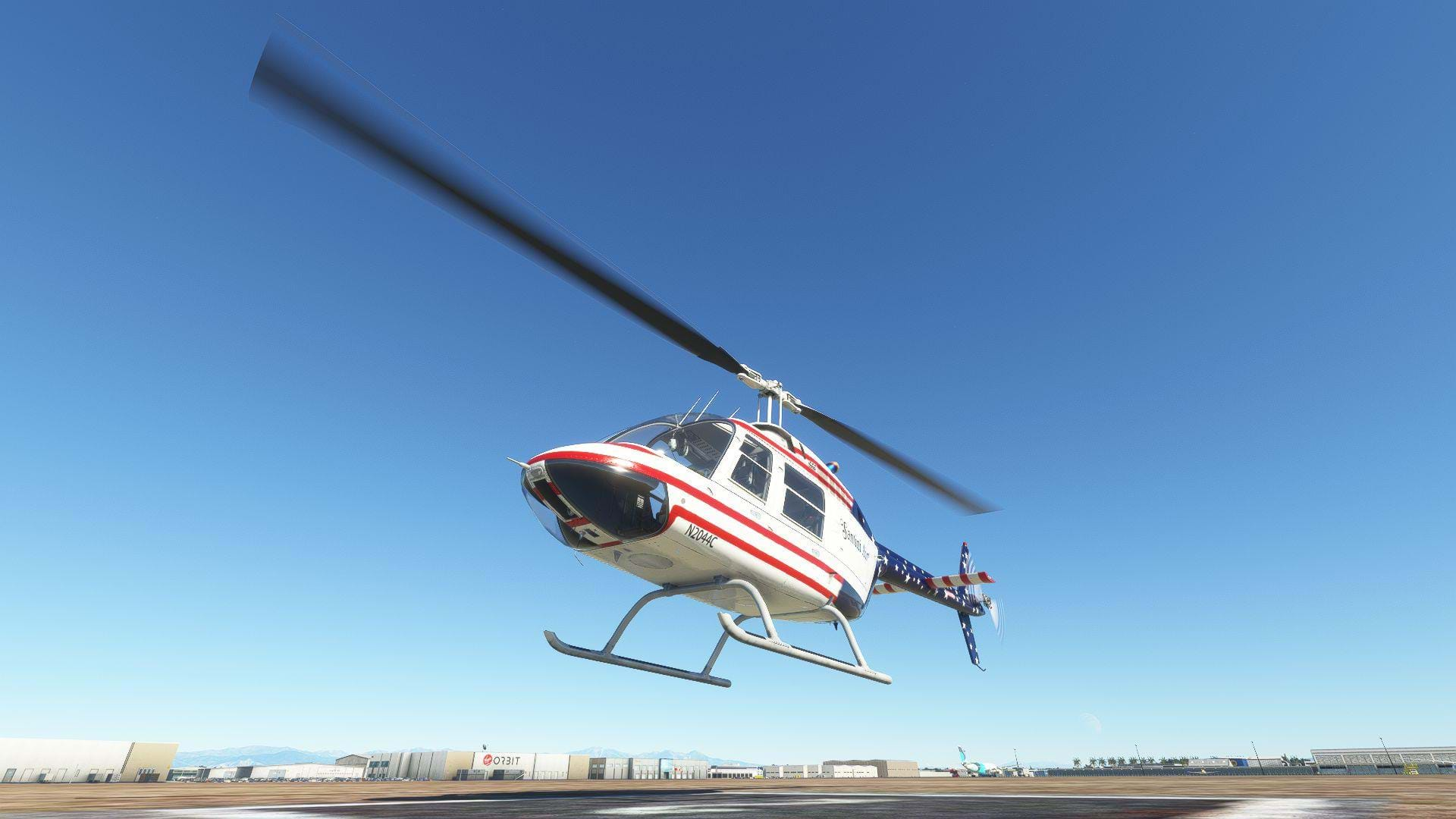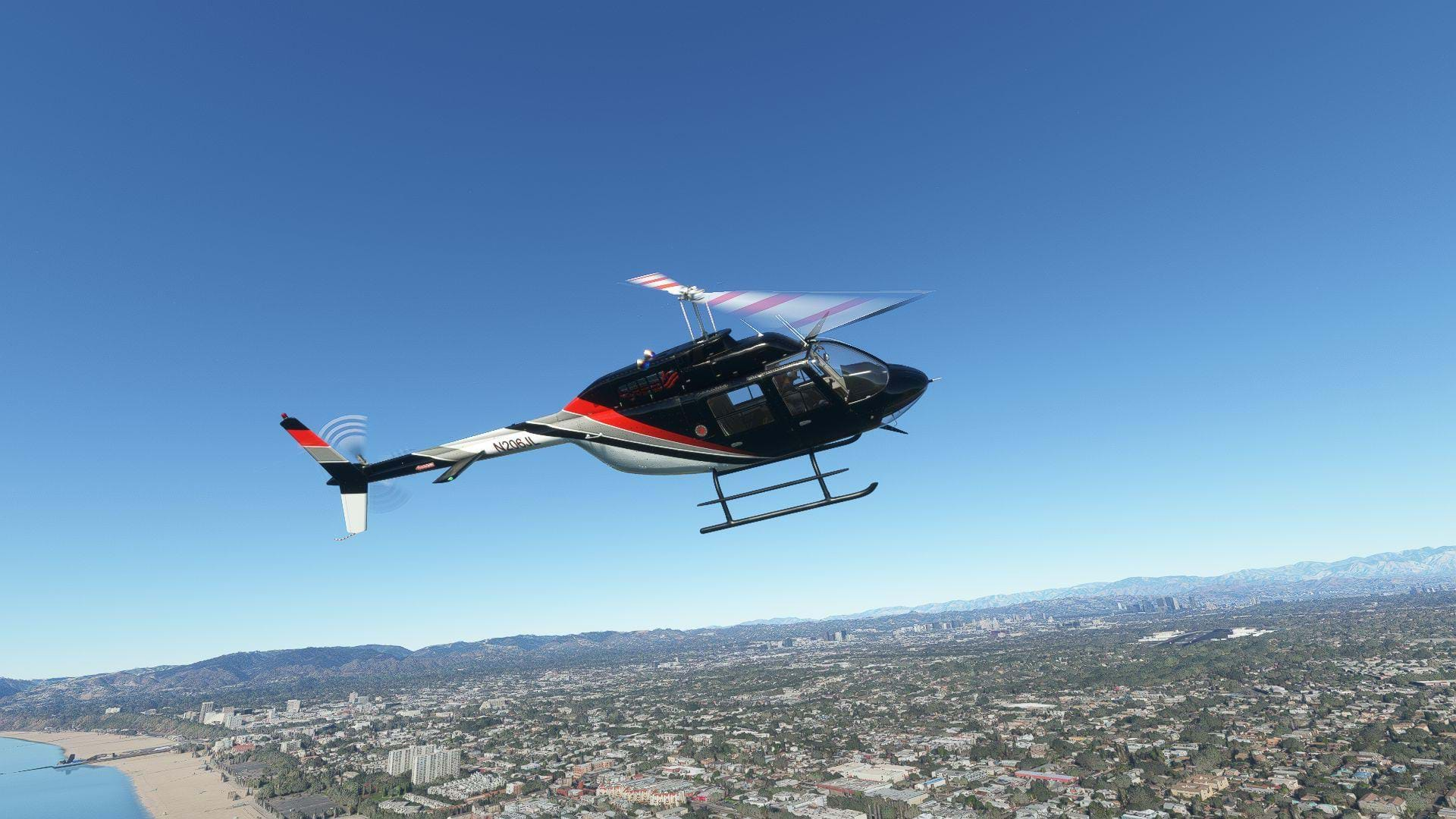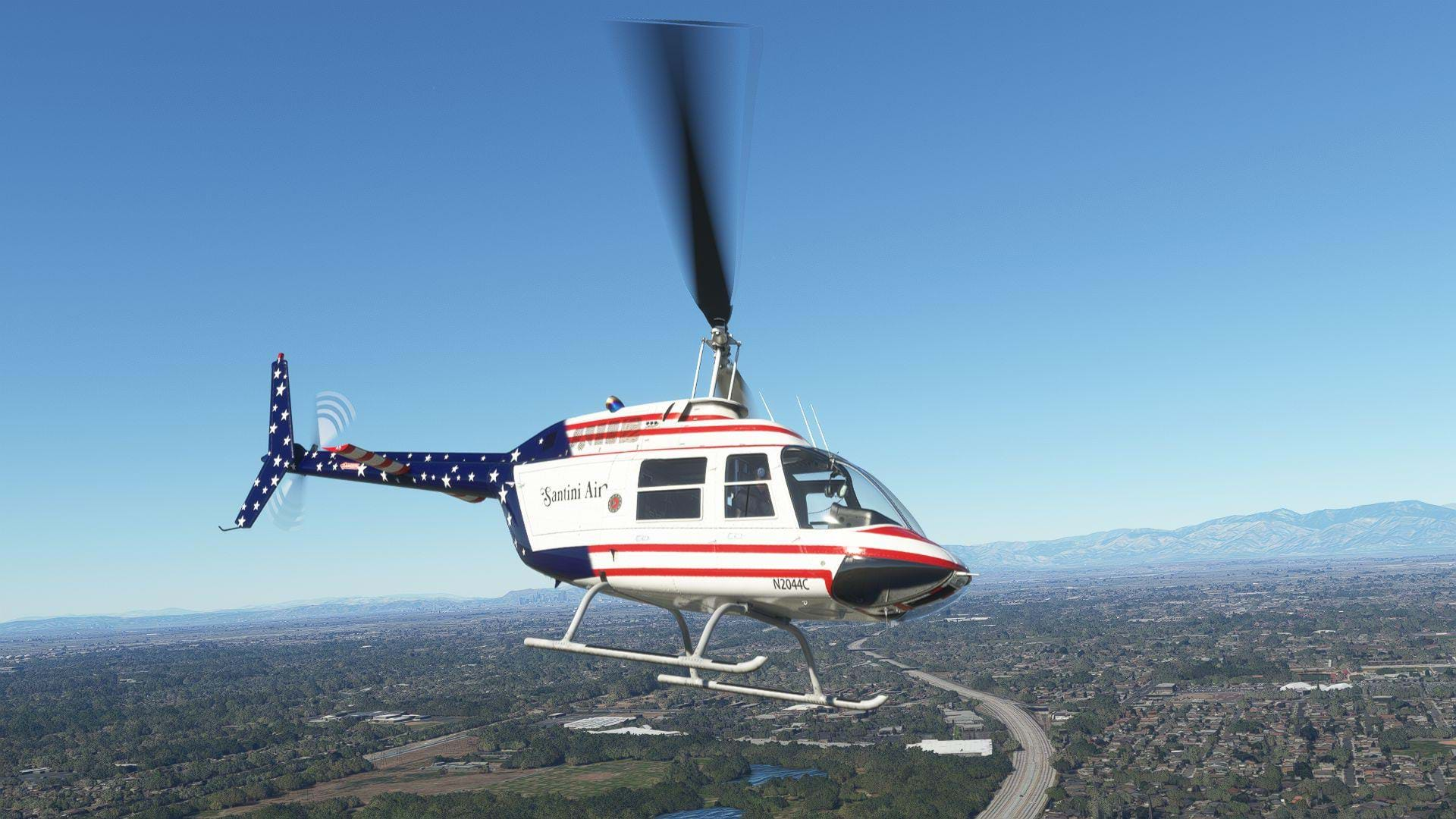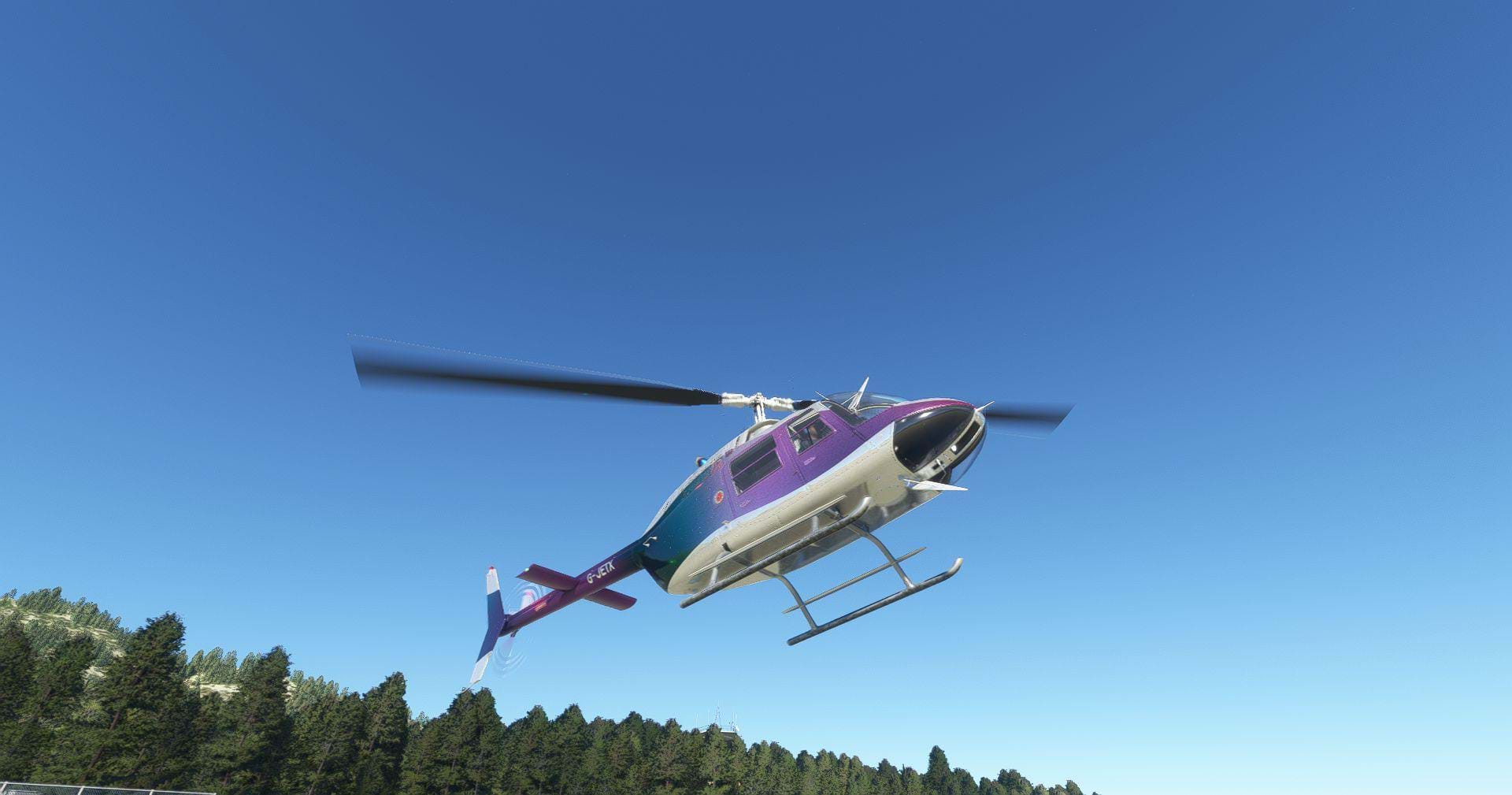[Editor’s note: just like the FlyInside Bell 206 Joe’s review was made amid update releases and the product may change. We will make small updates and adjustments when deemed necessary and may revisit this review in the future]
Cowan Simulation came on the simulation scene a few years ago and quickly became a leader in the X-Plane helicopter market.
Now Cowan Sim is delivering as promised to bring their models to MSFS. This is my third 206 review and my second for MSFS. MSFS is making a big splash with the home simulation community, as there’s really nothing else on the market that can compare with its visuals.
Although there were helicopters available shortly after its release those used their own flight model or were augmented with external programs like Airland, or by compiling their own flight model within MSFS using WASM.
In November, native helicopter support was implemented with a massive update to MSFS. Overnight, we got two new helicopters for the sim, for free, now included with the simulator. This was both good news, and bad news. The good news is, it’s now a little easier for developers to bring helicopters to MSFS. The bad news, the new support has eyebrow-raising limitations. The Bell 407 that now comes with the simulator showed us a lot of those limitations and these are things that Asobo and future developers will have to overcome.
As I mentioned in my previous 206 review , I won’t be directly comparing models between different developers. I’m sure there will be plenty of civilized (and uncivilized) debates in various online spaces about which is better.
However, this is the first time I’ve been able to review the same model, on two different platforms, by the same developer. So, you will see comparisons of this model to another version of itself in this review. This is important because a lot of people may have made the pilgrimage from X-Plane to MSFS this year, and they may be expecting all of the same functions in MSFS.
The differences between MSFS and X-Plane are more than just photographic scenery and puffy clouds. It’s an entirely new digital ecosystem that will generate some contrast that should be taken into account. That being said, the primary comparison will be between this model and my experience with the actual Bell 206B3.
Installation
If this is your first add-on aircraft for MSFS, and it wasn’t purchased through the marketplace in the actual sim itself, then adding it might be a little confusing.
Unlike X-Plane, where you simply drop it into the folder named aircraft, or on previous versions of Microsoft Flight Simulator where the folder hierarchy makes sense, MSFS is a bit of a scavenger hunt when it comes to finding the right folder.
I don’t know why they buried the folder so deep with file names that are long and not easy to commit to memory, but they did. After you find the Community Folder, installing this model is as easy as drag and drop, but you have to find it! A quick Google search will help with that. To make things easier for me, I just pinned the community folder to quick access in windows explorer so I don’t have to remember where to find it and save myself some mouse clicks.
First Look
The Cowan Sim 206 is virtually the exact same 3D model as the X-Plane version which isn’t a bad thing at all. In my opinion, this is the best-looking Helicopter for MSFS to date.
That opinion may come with challenges, but I stand by it. I cover most of the merits of this visual model in my review of the X-Plane 11 version, which you can read all about here at HeliSimmer.com . That being said, this model seems to take on new life in the advanced lighting of MSFS. The Cowan Sim 206 blends really well into the photo realistic scenery and weather of MSFS. So much so, that this same model now seems somewhat out of place in X-Plane to me.
All of the incredible details that I loved about the X-Plane version seem to be elevated in this new visual environment.
One thing notable difference about the MSFS version is that is finally corrected is the scale of the helicopter. The WHOLE helicopter! One thing I didn’t mention in my review of the X-Plane 11 version of this model is that the scale was WAY too big! I showed it on one of the screenshots, that was supposed to illustrate that point, but I neglected to actually write about it (my bad, y’all).
In the X-Plane 11 version, the Cockpit was big and spacious especially in VR. Anyone who’s actually flown in a Jet Ranger knows that spacious, isn’t a word most would use for the 206 unless it was irony or sarcasm. While it still offers more legroom than other light single turbines of its day, it was a cozy cockpit. The MSFS Cowan Sim 206 is cut down to a much more realistic size, which gives it a much more realistic feel in VR.
This is still the best B8 flight grip I’ve ever seen in any home-use flight simulator.
While the model is the same, some of the features from X-Plane 11 didn’t translate to MSFS, at least not yet anyway. While the clickable menus are gone, the customization options are still present in the weight and balance menu.
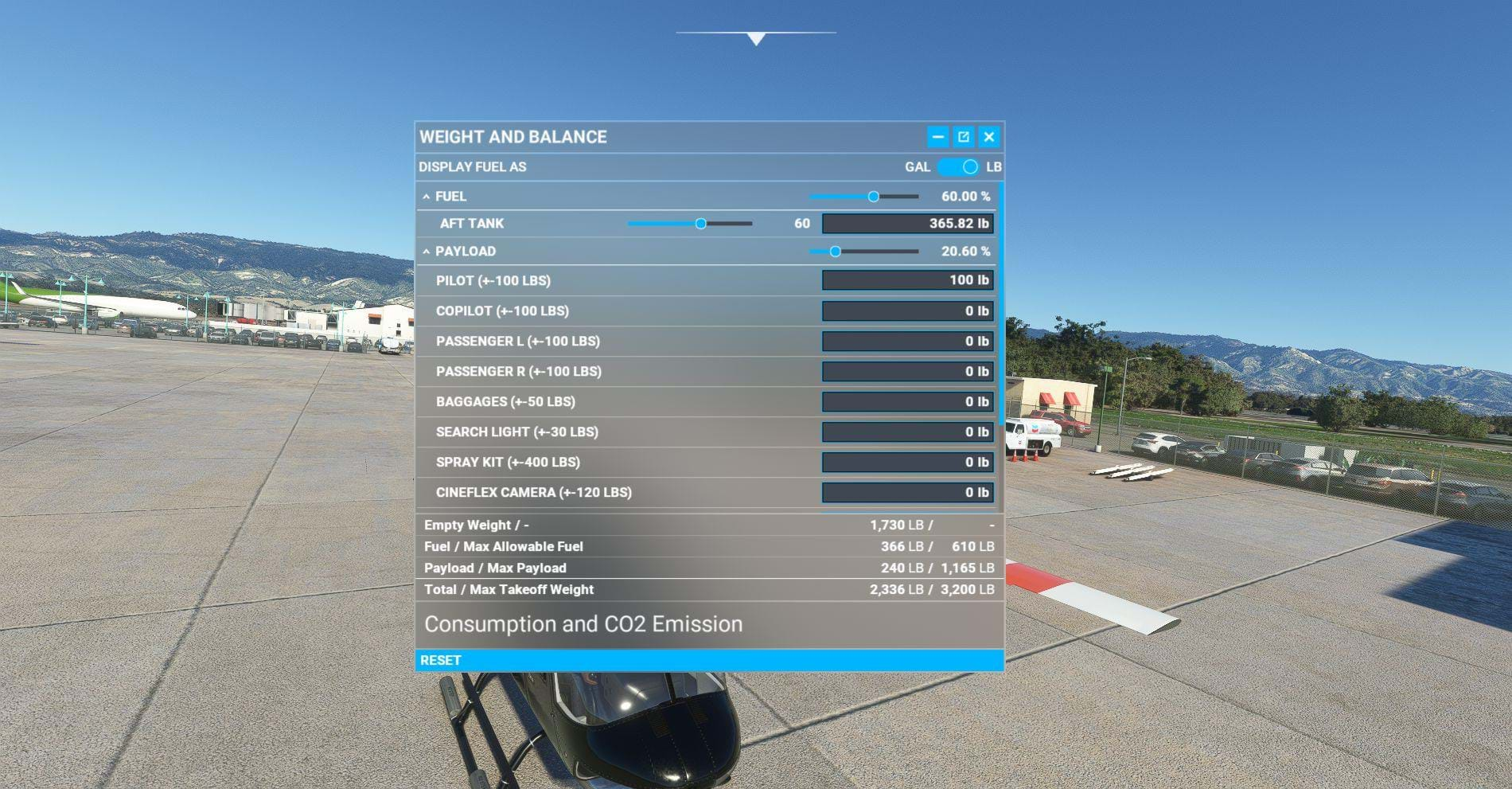 Because of the missing clickable menus we enjoyed in X-Plane, the MSFS version of the Cowan Sim has some drawbacks. For example, at the moment there’s no way to remove the co-pilot headset when not flying with a co-pilot. That’s a little annoying, but I’m sure it will be fixed in a future update. While the menu may be gone, it’s still really easy to customize your aircraft on the fly with the weight and balance menu.
Because of the missing clickable menus we enjoyed in X-Plane, the MSFS version of the Cowan Sim has some drawbacks. For example, at the moment there’s no way to remove the co-pilot headset when not flying with a co-pilot. That’s a little annoying, but I’m sure it will be fixed in a future update. While the menu may be gone, it’s still really easy to customize your aircraft on the fly with the weight and balance menu.
This isn’t that bad of an idea if you think about it. All of these options would add weight to an actual aircraft. The X-Plane model changed the weight for you. Now, you just have to enter the weight manually.
This model also comes with a paint kit. As far as I can tell, this paint kit is identical to the X-Plane 11/12 paint kit. So, it should be relatively simple to convert all of your X-Plane liveries to MSFS. I haven’t tried that yet, but it should be possible. Even so, the Cowan Sim 206 comes with over 70 liveries to keep you busy!
Sounds
I have very few notes for the sounds on this model. The engine start sequence sounds spot on. Ground and flight idle sound good, and all of the in-flight internal and external sounds are really good.
Systems
Unfortunately, the Cowan Sim suffers from some of the same systems problems that the included Bell 407 has in MSFS.
The lack of a fully functioning throttle isn’t great. It’s currently restricted to mouse or VR controller interactions but doesn’t actually respond to most throttle inputs from a joystick or collective. This is most notable during the engine start sequence. [Editor's note: this has to do with an issue with MSFS. To be able to make it work, custom code has to be added, which Cowan Simulation does not wish to add at this time. As soon as Microsoft/Asobo fixes this, Joshua Cowan will implement/fix it.]
This model behaves a lot like the included 407 as if it has a full FADEC start-up. After the engine is started, the throttle seemed to work to bring RPM to flight idle. But after that, the throttle axis on my collective was useless which is kind of frustrating. This continued to be a problem as we go into looking at the flight dynamics.
The other part of the engine start that isn’t correct is the TOT. N1 rises just fine, and because the throttle is broken, engine light off is seemingly automatic. But after ignition, there’s no rise in TOT. TOT only begins to rise when N1 is at about 40% when in reality it starts to indicate immediately after fuel is introduced with the throttle. This worked just fine in the X-Plane version, so I know Cowan Sim understands how this should look. But it seems they weren’t able to get this working prior to the release.
This current build also lacks a functioning trim ball, which makes it difficult to completely analyze its flight performance. In a real aircraft, it’s pretty easy to tell if you’re out of trim without looking at a trim ball. You can literally feel it. But, that’s not really possible in a sim, so a functioning trim indicator is very important.
The Electrical and fuel systems are modeled well. But, I think it’s fair to say that the Cowan Sim 206 systems modeling is incomplete and lacking in key areas. Cowan Sim is known for quick and constant updates. So, hopefully, these issues will be addressed quickly.
Flight Dynamics
I had lots of good things to say about this model in its X-Plane 11 form. And I have a lot of good things to say about this model too, but also some things to point out.
I was surprised to find that the hover handling of this model is equal to if not a little better than the X-Plane version. This model shows very realistic hovering characteristics. Cyclic response is depicted well, as well as pedal input to maintain heading. IGE hover power is well within the realm of realism, and its hover attitude feels right too. The cyclic isn’t overly responsive at a hover, and the model isn’t overly stable. Takeoff in this model is really familiar. Nothing really stands out as unrealistic.
Cruise flight shows the only real deficiency in the basic flight model that I could find with the cyclic. Lateral cyclic input is noticeably more sluggish than it is in pitch. The Jet Ranger isn’t the most nimble helicopter ever produced, but the lateral cyclic input feels a lot more sluggish than I would expect. Although the pedal input in cruse seemed correct, I couldn’t verify this because the trim ball isn’t functional.
Another problem stemming from the underdeveloped systems is that it’s practically impossible to test autorotation properly. This is a similar issue that I have with the new Bell 407 in MSFS.
My understanding in talking with developers is that there’s something in the code of the default flight model that prevents the use of the throttle in turbine helicopters, and also causes some weird governor behavior. The throttle on the Cabri G2 works and the governor sort of works, but it’s all sorts of broken on the 407. And since the Cowan Sim also uses the native flight model support, it’s seeming to be suffering from something very similar.
Other developers have gotten around this by just not using the MSFS flight modeling and using their own. If this is the case, I hope Asobo gets this fixed quickly, because this will hinder future development on a lot of models in the pipeline for release.
In addition to the issue listed above, I could not get a good needle split when shutting the engine down via the fuel valve or using the mouse to roll the throttle to idle. This dragged the rotor RPM down to a level that really shouldn’t have dropped to. It was like the overrunning clutch didn’t disengage and the rotor was back driving the power turbine section dragging the RPM down. The low rotor RPM made the cyclic response really sluggish, which is realistic, but the low rotor RPM made the flare at the bottom of the descent completely ineffective resulting in a crash. There was really nothing I could do to bring the rotor RMP back up to the green arc. This would be realistic if I had a severely damaged engine and transmission, but I don’t think that’s how this was modeled. I should note that the default Bell 407 has similar behavior during an engine out scenario. This could be because of the overly active governor code. In reality, these deficiencies are in the systems modeling, that affect the flight model. So I kept that in mind when figuring out my scoring.
Despite the sluggish lateral cyclic response, trim ball, and autorotational qualities, this model performs really well in virtually every other flight profile. Landing is noneventful, and it doesn’t have the X-Plane float that some X-Plane models did. Overall, this is still a very enjoyable flight model.

